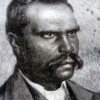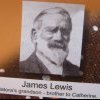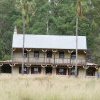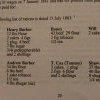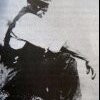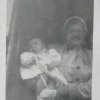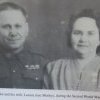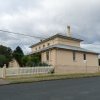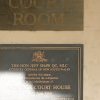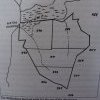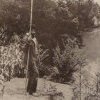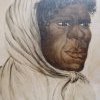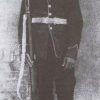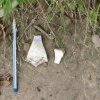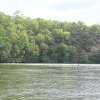1880s
1880
1881
Windsor Police Court. Breach of Aboriginal Protection Act: William Alcorn and John Johnston, are charged with being found lodging in an Aboriginal's hut or camp on the Windsor Road, on the night of the 30th July. 18 Defendants plead not guilty, and are defended by Mr Walker. The Sergeant, in evidence, says “that from information received, the hut in question is known as a common brothel by general repute.”
‘The Aborigines of the district assembled at the Windsor Courthouse on the Queen's Birthday, for the yearly distribution of blankets. There does not appear to be any falling off in the contingent; but the Aborigines are gradually losing their distinctive character, and are becoming a whitey-brown nation.'
The following are the names and ages of the Lower Portland tribe: - Elizabeth Captain, 28; Margaret Shaw, 23; Jane Shaw, 6; Christina Shaw, 5; an infant, one week old; Sally Barber, 23; Charles Cumber, 50; Matilda, 35; Joseph Frederick, 3; Elizabeth Doyle, 27; Bertie Nowland, 24; Totty Barber, 3; Albert Shaw, 3; Andrew Barber, 26; Albert Andrew Barber, 22; Boney Stewart, 22; Rachael Lenart, 23; Harry Curber, 25; Margaret Cumber, 30; Willie Cumber, 12; Alfred E. Everingham, 10; Emily Everingham, 2; Sally Bowman, 23; Tommy Cox, 60; George Captain, 37; Johnny Barber, 55; Elizabeth Barber, 24; Edward Barber, 8; Charles Barber, 6; Arthur Muley, 4; Jane Barber, 18." (The Australian, Windsor and Richmond Advertiser, 28 May)
1882
Henry Barber and Annie have 7 children, of whom two survive: Frederick (Yeri) and Wesley (Muckeye) born 1882. Both men are well known cricketers. Andrew’s son Albert is also well known. All three play for Botany Cricket team in 1907 and earlier for Sackville Reach. They are employed as log splitters near Marsden Park.
1883
Tom Lewis the grandson of Queen Matora, is working at Tizzana Winery (see photograph). He is unable to pay the school fees for his large number of children so they are forced to leave Sackville Reach Public School. He moves to Marra Marra Creek to join his extended family and works as a lime burner and ship repairer. The family grow an orchard and collect oysters and fish. (J Brook and J L Kohen The Parramatta Native Institution and the Black Town)
1884
Hawkesbury Chronicle and Farmers Advocate, Windsor, NSW:
“Thomas Morley was charged by the Police with an infraction of the Vagrant Act, by being in a camp of Aborigines, at Portland Head, and wandering with the wife of an Aboriginal named William Barber. Barber stated that the defendant had come to the camp, and his wife, with whom he had lived for eleven years, and by whom he had three children, two now living and one dead. The woman was inveigled away by Morley. At this stage, the senior-sergeant begged that the case should go no further. He explained to him the nature of the offence, how serious it was, and what punishment he was liable to under the law, so that he would not again interfere with this man's wife. The feelings of a black man was: as sensitive as those of a white man; and if the defendant persisted in going to the camp, Barber might at any moment, use a spear or a waddy upon the defendant. Mr Primrose lectured the defendant at some length, and told him that if he came before the Bench again he would get 6 months in gaol. Defendant was ordered to pay costs only-5s 6d, and was allowed seven days to pay.”
1885
1886
1887
Rations and clothing are given to 18 adults and 7 children at Windsor (NSW Aboriginal Protection Board Report, 1887-8, p. 3). The Report notes that, (p.1) in relation to part-Aborigines, ‘The difficulty of dealing with this latter class by no means diminishes, but it is hoped that whilst no special scandal arises from their presence in the community, their absorption into the general community may at some future date be accomplished.’ NSW State government funds are being expended ‘to make its [Koori people’s] end as happy and comfortable as possible’. (p. 2)
1888
1889
An Aboriginal Reserve is declared at Sackville Ridge (Portland Head). For several decades it is the largest designated reserve in the Sydney area, outside of La Perouse. It is in two parts at first. (1) Aboriginal reserve gazetted, no. 9857. It is 11 miles from Wilberforce, area 150 acres, all scrub and rocks except for 3 acres. Unfenced, uncultivated, one bark hut occupied by a Darug family. Dillon and Onus families. NOTE (2) Reserve no. 9856 gazetted 9 miles from Wilberforce, ‘30 acres [21 ha.] all scrub and rocks except for half an acre, area cleared and area under cultivation is nil’. One slab hut is occupied by a Darug family. A third part is added to the Sackville Reserve: Reserve no. 28,546, 40 acres [28 ha.] next to reserve no. 9857. One end of the reserve is situated in 2012 at Jerimuda Bed and Breakfast, 72 Laws Farm Rd, Lower Portland 2756, (www.jerimuda.com.au). 2001











